West Virginia is a nature lover’s paradise in the Southern United States Appalachian region. With rolling hills, dense forests, and beautiful mountain ranges, it’s hard not to fall in love with the area. The state is home to a wide variety of wildlife, including many species officially recognized by the state. In this article, we’ll take a closer look at the official state animals of West Virginia. Let’s learn more about the unique and fascinating creatures that call this state home.
Reptile: The Rattlesnake
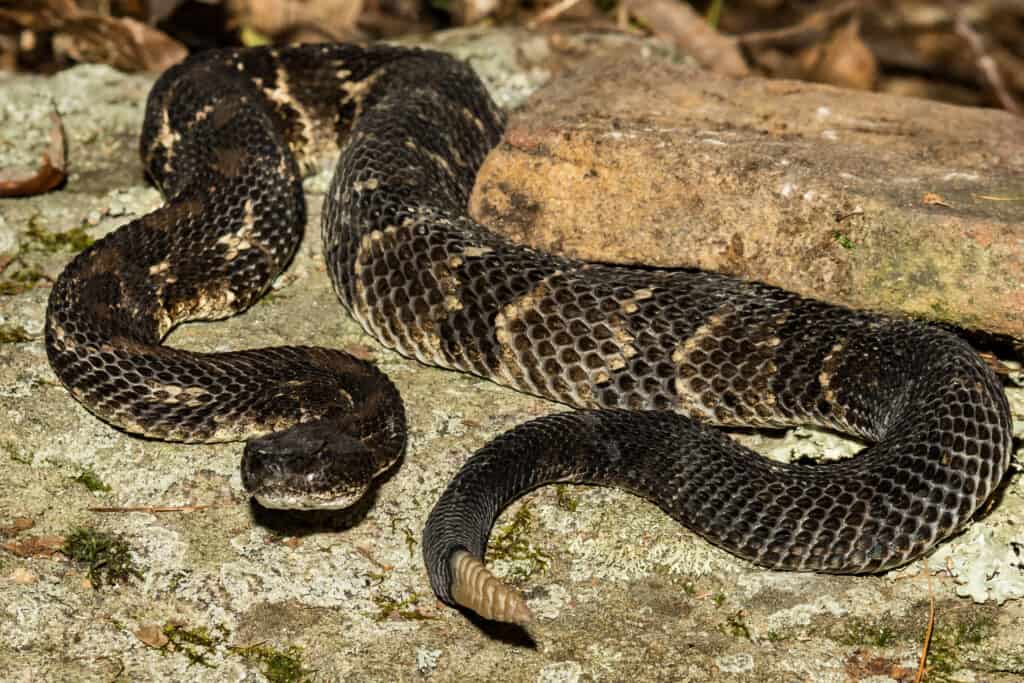
Rattlesnakes play an important role in the ecosystem of West Virginia.
©iStock.com/JasonOndreicka
The Rattlesnake is the official reptile of West Virginia. This venomous snake lives throughout the state and has a unique rattle, which it uses to warn predators of its presence. The Rattlesnake is a threatened species in West Virginia and is protected by authorities. Several species of rattlesnakes are in the state, including the Timber Rattlesnake and the Eastern Diamondback Rattlesnake.
Rattlesnakes play an important role in the ecosystem of West Virginia. This reptile helps to control the populations of small mammals and birds. Rattlesnakes are timid and solitary creatures that will only strike when they sense danger, despite their reputation for being dangerous. If you encounter a rattlesnake in the wild, give it plenty of space and avoid getting too close.
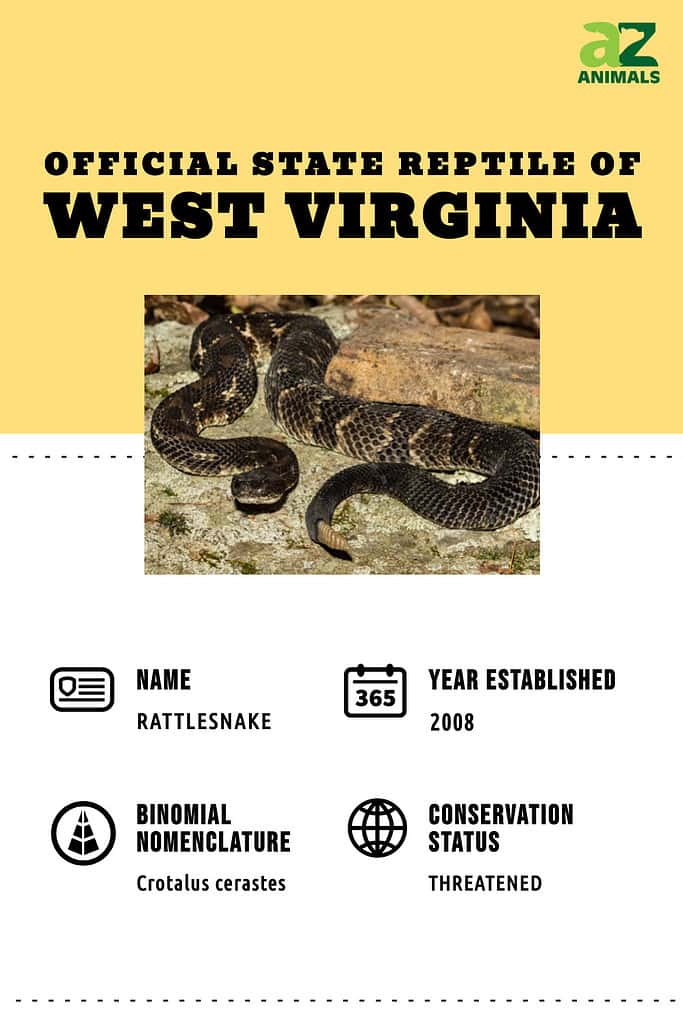
Amphibian: The Northern Red Salamander

The species is also an indicator of the health of the state’s forest ecosystems.
©Mike Wilhelm/Shutterstock.com
The Northern Red Salamander is the official amphibian of West Virginia. This species is throughout the Appalachian Mountains and is known for its distinctive red coloration. The Northern Red Salamander is a tiny, streamlined amphibian that generally stays on land. It conceals itself in the fallen leaves and beneath logs.
The Northern Red Salamander is an integral part of the environment of West Virginia. This amphibian supplies food for larger predators such as snakes and birds. The species is also an indicator of the health of the state’s forest ecosystems. The changes in the populations of these salamanders can be an early warning sign of environmental problems.
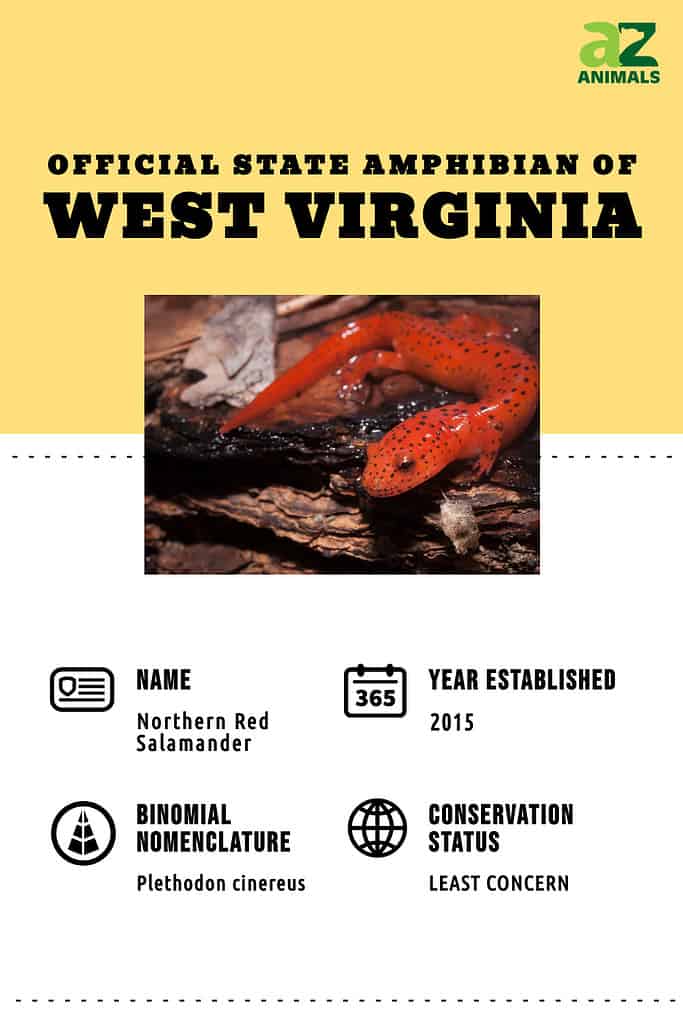
Animal: The Black Bear
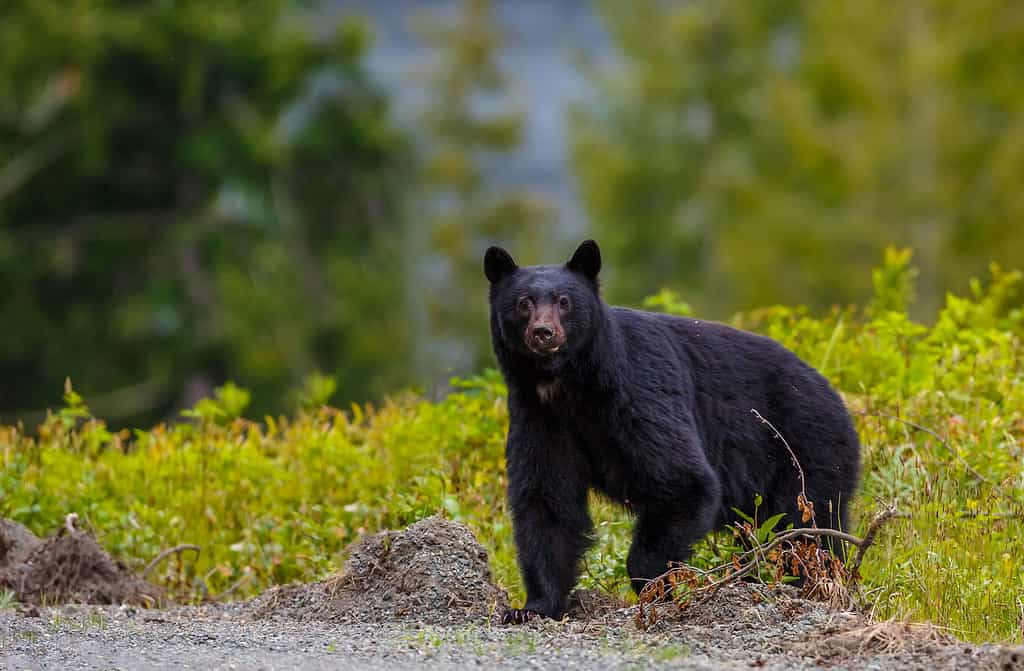
The
Black Bear
is an omnivore, feeding on various foods, including berries, nuts, and small mammals.
©Menno Schaefer/Shutterstock.com
The Black Bear is the official animal of West Virginia. This large and powerful species is native to the state and well-known for its powerful build and shy nature. The Black Bear is an omnivore, feeding on various foods, including berries, nuts, and small mammals.
Black Bears are a vital component of the environment of West Virginia. They assist in managing the numbers of small mammals and birds. Despite a Black Bear’s size and strength, they are shy and reclusive animals that are typically not dangerous to humans.
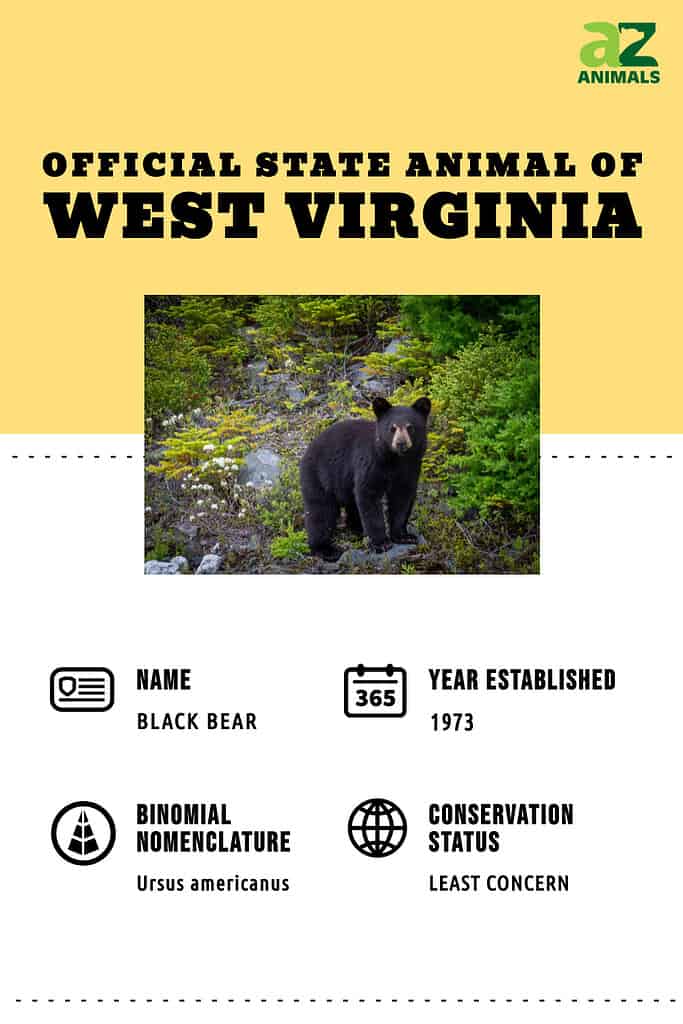
Butterfly: The Monarch Butterfly

Changes in the populations of Monarch Butterflies can be an early warning sign of environmental problems.
©Media Marketing/Shutterstock.com
The Monarch Butterfly is the official butterfly of West Virginia. This species is famous for its distinctive orange and black markings and remarkable migration patterns. The Monarch Butterfly migrates and flies thousands of miles yearly from its breeding grounds in the United States and Canada to its wintering grounds in Mexico.
The Monarch Butterfly is an important part of the ecosystem of West Virginia. This butterfly serves as a pollinator for many species of plants. The species is an indicator of the health of the state’s ecosystems. Changes in the populations of Monarch Butterflies can be an early warning sign of environmental problems.

Fish: The Brook Trout
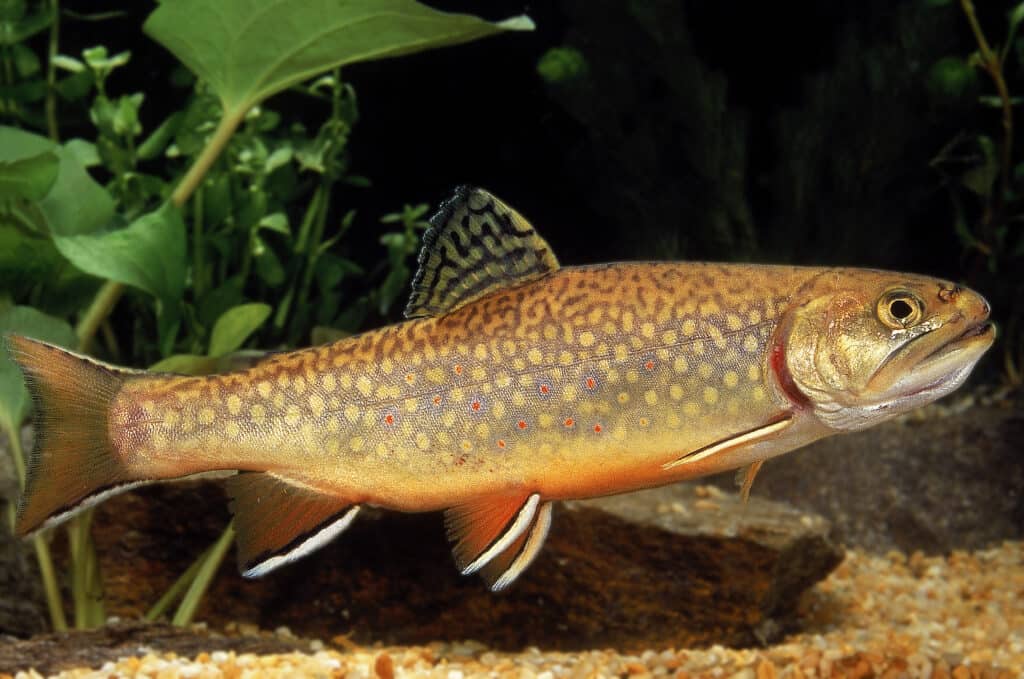
This type of trout is a hardy species that is adaptable to life in the mountain streams of West Virginia.
©Slowmotion GLI/Shutterstock.com
The Brook Trout is the official fish of West Virginia. This species is in the streams and rivers of the state. It is known for its distinctive markings and bright coloration. The Brook Trout is a popular species for recreational fishing and is an integral part of the state’s natural heritage.
Brook Trout are native to the Appalachian Mountains and are well adapted to life in the cold, clear streams and rivers of West Virginia. These fish feed on various prey, including insects, crustaceans, and small fish. The state’s ecosystem relies on the Brook Trout. This type of trout is a hardy species that is adaptable to life in the mountain streams of West Virginia.

Insect: The Honeybee
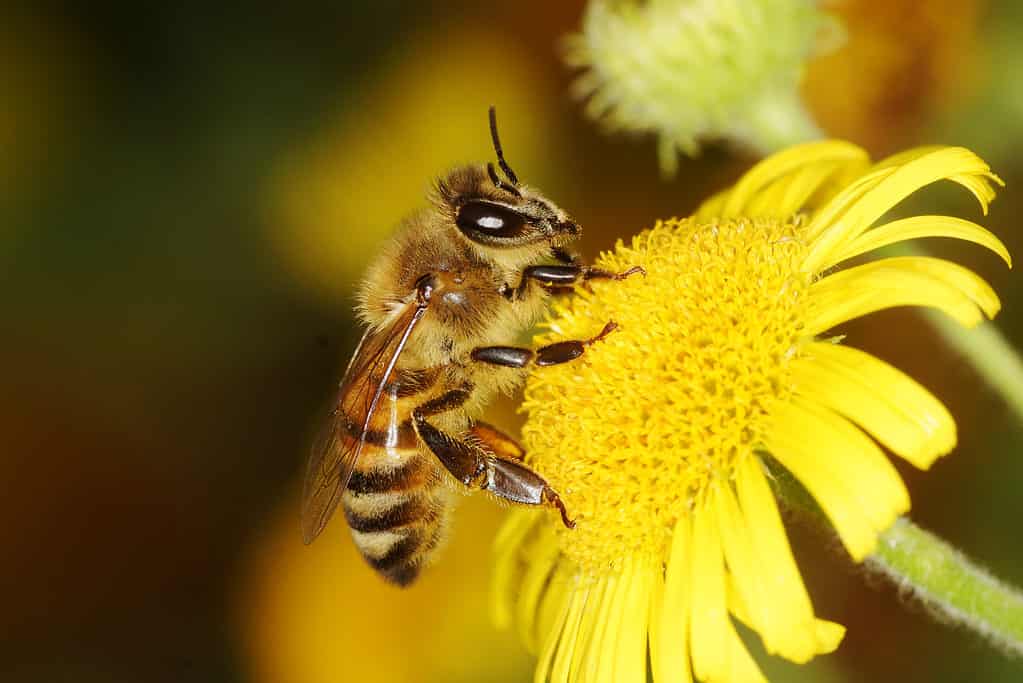
Without the pollination services provided by honeybees, many of the state’s crops and wildflowers would be unable to reproduce.
©Maciej Olszewski/Shutterstock.com
The Honeybee is the official insect of West Virginia and is well-known for its role in pollination and for producing honey. The Honeybee is a highly social insect that lives in large colonies, with each colony consisting of thousands of individuals.
Honeybees are a vital part of the ecosystem of West Virginia, serving as pollinators for many species of plants. Without the pollination services provided by honeybees, many of the state’s crops and wildflowers would be unable to reproduce. Honeybees are also crucial for producing honey. This is a valuable food source for humans and a source of income for beekeepers.
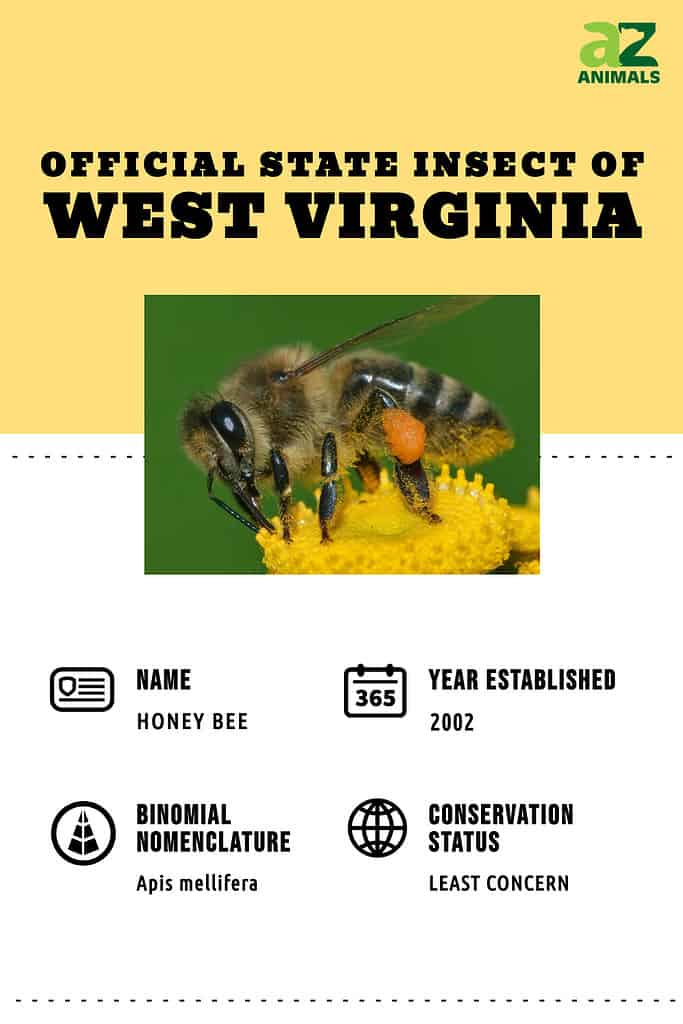
Conclusion
West Virginia has many official state animals. These animals have legal protection and are essential to the state’s natural heritage. We can better appreciate the state’s diverse wildlife by learning about them. Whether you love nature, fishing, or the outdoors, West Virginia has something for everyone to enjoy.
The photo featured at the top of this post is © Dotted Yeti/Shutterstock.com
Thank you for reading! Have some feedback for us? Contact the AZ Animals editorial team.






